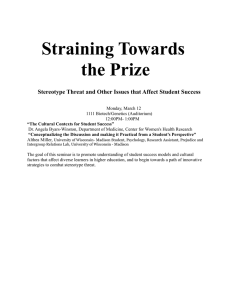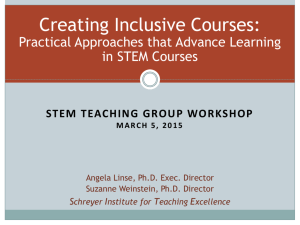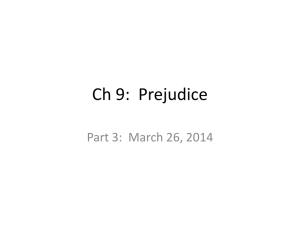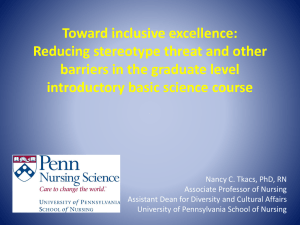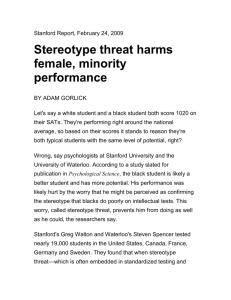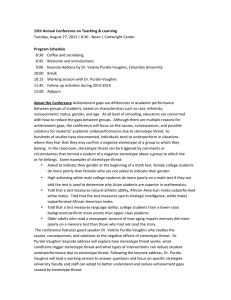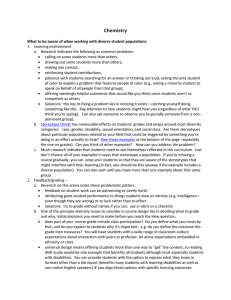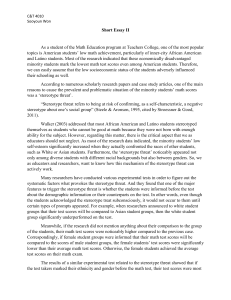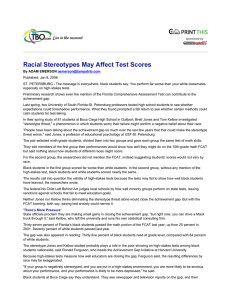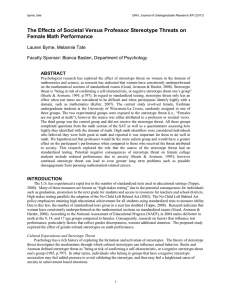Working with Diversity: Best Practices Cyndi Cyndi Kernahan
advertisement
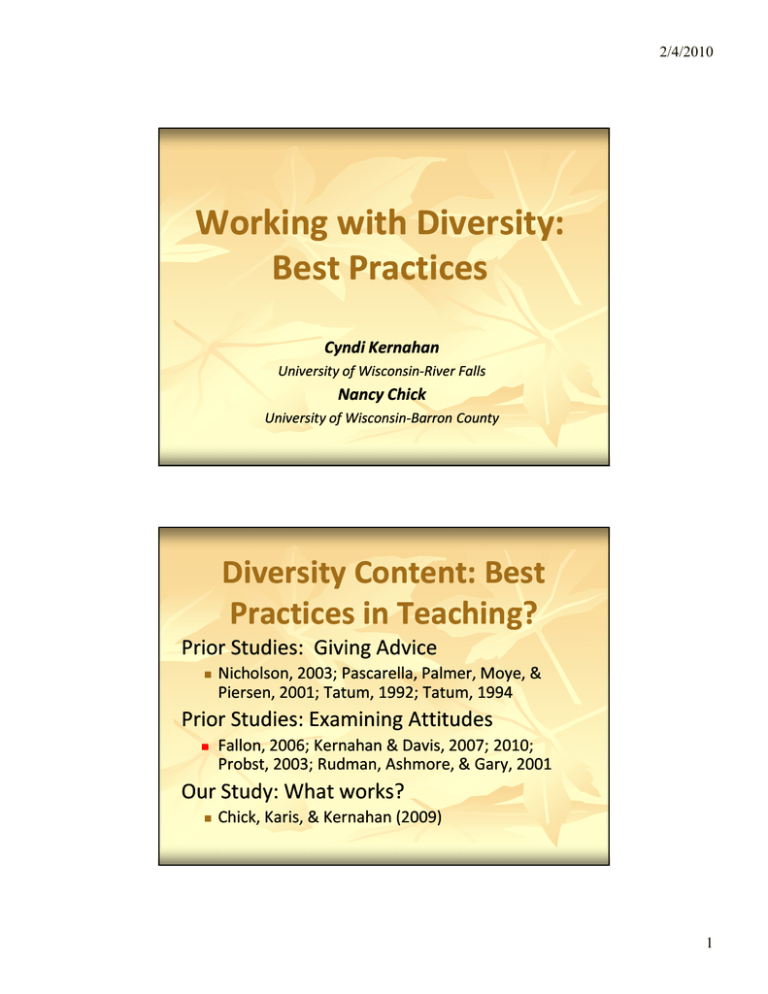
2/4/2010 Working with Diversity: Best Practices Cyndi Kernahan University of WisconsinWisconsin-River Falls Nancy Chick University of WisconsinWisconsin-Barron County Diversity Content: Best Practices in Teaching? Prior Studies: Giving Advice Nicholson, 2003; Pascarella Pascarella,, Palmer, Moye, Moye, & Piersen,, 2001; Tatum, 1992; Tatum, 1994 Piersen Prior Studies: Examining Attitudes Fallon, 2006; Kernahan & Davis, 2007; 2010; Probst,, 2003; Rudman, Ashmore, Probst Ashmore, & Gary, 2001 Our Study: What works? Chick, Karis Karis,, & Kernahan (2009) 1 2/4/2010 Whom did we study? How? African American Literature Course Psychology of Prejudice and Racism Roots and Diversity Geography Cultural Competence in Family Therapy 91 Participants Total Qualitative and Quantitative Measures Racial Attitudes Survey Student Reflections Findings: What Students Said… … Helped Them Learn Kinds of topics Kinds of assignments … Helped Them “Make Sense” of Their Learning Content Process Discussions Opportunities to practice empathy 2 2/4/2010 Findings: Our Analyses Cognitive Obstacles Oversimplification and dualistic thinking Affective Obstacles Absence of metameta-affective tools Findings: Quantitative Results 3 2/4/2010 Recommendations Specific kinds of class discussions Opportunities to practice & experience empathy Metacognitive & metameta-affective activities Three Minute Writing How might you incorporate this into your own teaching? What is relevant to you? 4 2/4/2010 Diversity Pedagogy, or Teaching Inclusively Diversity Pedagogy Stereotype Threat RadioLab (The Obama Effect, Perhaps). Colorblindness “Neutral” Teaching 5 2/4/2010 Stereotype Threat What is it? Challenging Test, Diagnostic Anxiety and Apprehension Lowered Performance Why is it happening? Unconscious Disruption and Chatter (Stereotype is Present) Not A Lack of Confidence in themselves, but a Lack of Confidence in the System Stereotype Threat What are the Consequences? Disidentification with School or Subject “Double Consciousness” Scenario Practice 6 2/4/2010 Stereotype Threat: Best Practices High Expectations Challenge Message, not Remediation Message Intelligence is changeable and expandable “Students usually improve over time in this class” Stereotype Threat: Best Practices This is a tough class, and you belong here Avoiding “over praise” Emphasizing Fairness Grading Blind, Having Clear StandardsStandardsEXPLICIT 7 2/4/2010 Three Minute Writing How might you incorporate this into your own teaching? What is relevant to you? Colorblindness vs. Race Consciousness What is it? What does it look like? What are the consequences? Scenario Practice 8 2/4/2010 Colorblindness: Best Practices “race-consciousness” or “equity“race“equity-mindedness” (Harper 2009), “critical multiculturalism” (McLaren 1994) Be proactive, intentional. Three Minute Writing How might you incorporate this into your own teaching? What is relevant to you? 9 2/4/2010 “Neutral” Teaching Practices “[M]uch of what I took as neutral teaching “[M]uch practice actually functions to keep our courses less accessible to students from nonnon-traditional backgrounds…. (almost) all traditionally taught courses are unintentionally but nevertheless deeply biased in ways that make substantial differences in performance for many students.” (Nelson, 1996) “Neutral” Teaching Practices What are some? What do they look like? What are the consequences? Best Practices 10 2/4/2010 Final Three Minute Writing How might you incorporate this into your own teaching? What is relevant to you? 11
